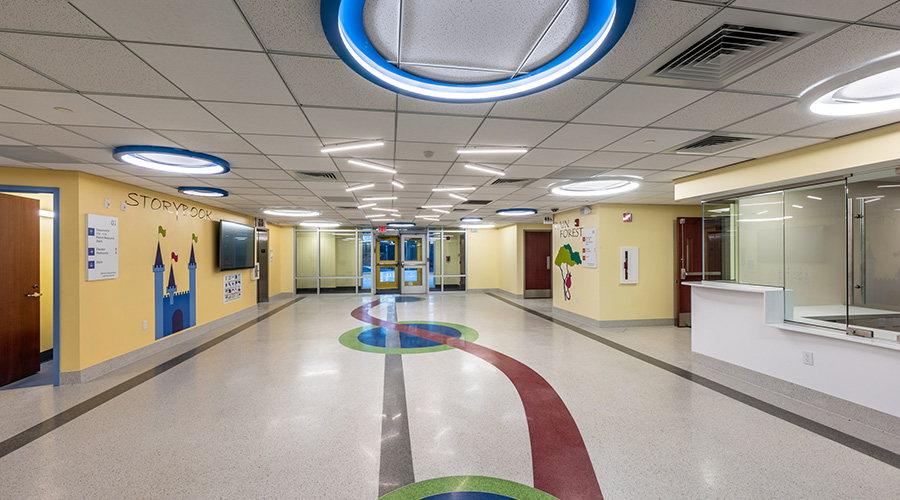Everything Old is New Again
The challenge at the College of William and Mary is ensuring a renovated historic building is maintained and operated efficiently
There are old buildings, and there are really old buildings — at least by this nation’s standards. Built between 1695 and 1699, the Sir Christopher Wren Building on the campus of the College of William and Mary in Williamsburg, Va., is the oldest academic building in continuous use in the United States.
But just because it is old and historic does not mean it is obsolete.
“The building is still used fairly vigorously by the college,” says Louise Lambert Kale, executive director of the college’s three-building historic campus, adding that the building still houses both classrooms and offices. “This is not a museum. It’s still an active part of the campus life.”
But the Wren Building’s active academic life, combined with its extreme age, took their inevitable toll, and the college was forced in 1999 to undertake a two-year renovation of the three-story structure.
Renovating the 300-year-old building, then ensuring it is maintained and operated efficiently, is a monumental task.
From Breakdown to Renovate
“All of the building’s systems were well past their life expectancies,” says Dave Shepard, the college’s deputy director of facilities management who manages the department’s 55-person maintenance staff. “We just couldn’t get repair parts.” He added that parts of the 37,297-square-foot building — specifically, the chapel and the great hall — had problems with finding the proper levels of humidity.
And with the exception of regular tests of the building’s chillers and boilers, care of the structure had turned into “almost strictly breakdown maintenance” Shepard says.
The college’s response to the situation was to undertake a renovation of the entire structure — a “gut replacement,” as Kale calls it. The project called for the replacement of all of the building’s mechanical, electrical, and plumbing systems.
The work also included carrying out exterior repairs to and stabilization of the brick and masonry walls and roof tiles, along with the installation of a fire-sprinkler system — a crucial and somewhat ironic system for a building that has been destroyed by fire three times and completely rebuilt each time.
Shepard says maintenance technicians and others in the department worked closely with architects and contractors to work out the details of the renovation work and to make equipment and structural changes to the building that would both ensure its historic nature and its cost-effective maintainability in the future.
The college’s historic campus also included The Bafferton and The President’s House, both of which were built in 1723. Its 1,200-acre campus includes 199 buildings containing 3.5 million square feet.
The Wren Building renovation cost the college about $3 million, Kale says. The state-supported institution received about $4 million in private donations, with the stipulation that the college place $1 million for an endowment designated for “extraordinary” repairs to the three historic campus buildings and five accompanying buildings, she says.
The endowment is an acknowledgement that such repairs to historic — or just old — structures often fall outside of organizations’ routine budget considerations.
“With historic buildings, even routine repairs can be very expensive.” she says.
Material Issues
During the renovation project, maintenance workers and supervisors followed a strict policy that was put in place to protect the building’s historic materials.
”We would not consume any historic brick in the renovation,” Kale says, adding that any penetration of the building be done in consultation with an architect.
One exception to the policy cropped up, however. Installing piping for the sprinkler system required carefully planned core drilling through the foundation, following advice from masonry specialists at Colonial Williamsburg, which also features a collection of colonial structures. The college gave the cores to Colonial Williamsburg for analysis and display of historic materials.
The project also required the construction of a small mechanical room in the cellar of the building’s Great Hall to minimize the need for larger equipment elsewhere. According to Shepard, workers replaced one existing chiller with four modular chillers because “they were the only ones we could get in the building without damaging the brick.” Workers cut up the old chiller to remove it.
The building’s size also dictated other equipment accommodations.
“This is a small building, and there’s no opportunity for long duct runs,” Kale says. So the renovation called for the installation of eight air-handling units throughout the structure, as well as 12 fan-coil units and 24 fin-tube units.
The catch for technicians performing maintenance on the units is that the latter two sets of equipment are located behind wainscoting — a concession to the material’s historic aspects.
The location is “one of our remaining challenges, but that’s due to the nature of the building,” Shepard says.
And because the building features irreplaceable historic materials and components, the maintenance staff had to take special care when planning and carrying out renovations and repairs. In part, the technicians relied on historical structural reports to determine the condition of the building and plan their work.
“Dave’s staff is sensitive to the presence of 17th and 18th century materials in these buildings,” Kale says. For example, “they were adding an electrical receptacle to The President’s House, and they consulted the reports on where to cut to avoid 18th Century baseboard and floorboards,” she says.
Attention to the building’s historic ambience went as far as designing and installing the lighting system. In planning the fire-safety system, planners opted to conceal emergency lights as much as possible to avoid having their presence spoil the appearance.
The Finished Product
The Wren Building remains an active part of the College of William and Mary campus. Perhaps more importantly for Kale, Shepard and his staff, it is far more manageable, maintainable and operational than before the renovation.
“The equipment is new, the staff understands the systems better, and the equipment is readily accessible for maintenance,” Shepard says. The department’s general approach to maintenance and operations also has changed to meet the needs of the updated building.
“Maintenance now is much more formalized,” he says. The college’s work-order management software has helped make the department more efficient, and it features a tie-in to a terminal for Kale’s use that enables her to alert technicians of any problems she might find.
And instead of using a reactive, breakdown maintenance approach, “we have much more aggressive maintenance now,” Shepard says, such as scheduled monthly inspections of all HVAC system components and equipment.
Shepard and Kale both stress the importance of teamwork and communication early in the process as a way of ensuring the success of such a project. For Shepard, this was especially true when it came to the maintenance staff, which works most closely each day with the building and its systems and components.
“You need to bring all the parties together early to really get things going the right way,” Shepard says. “It makes things that much easier down the line.”
Related Topics:











